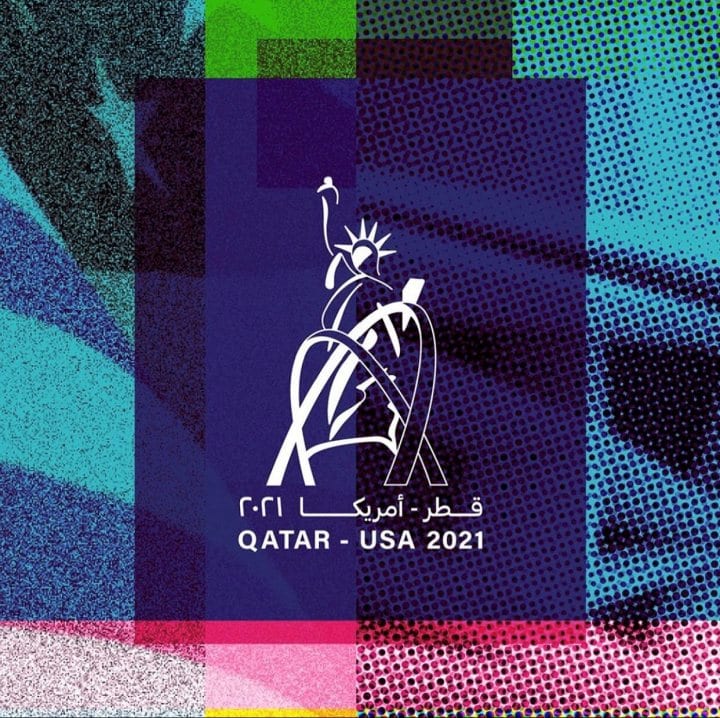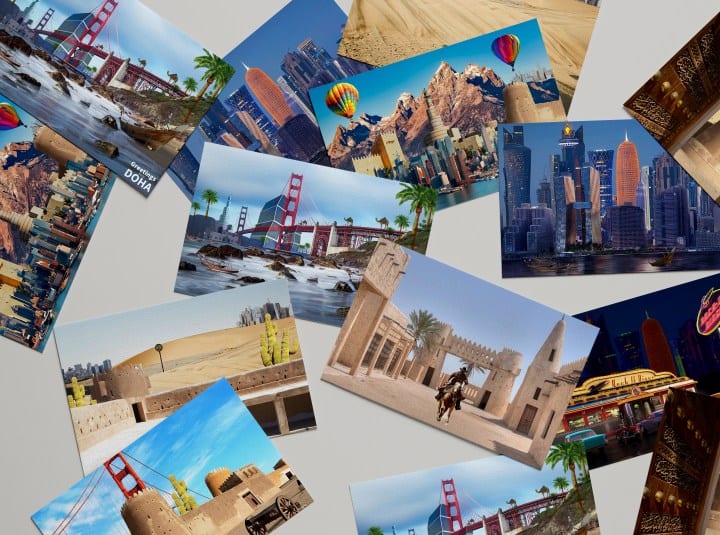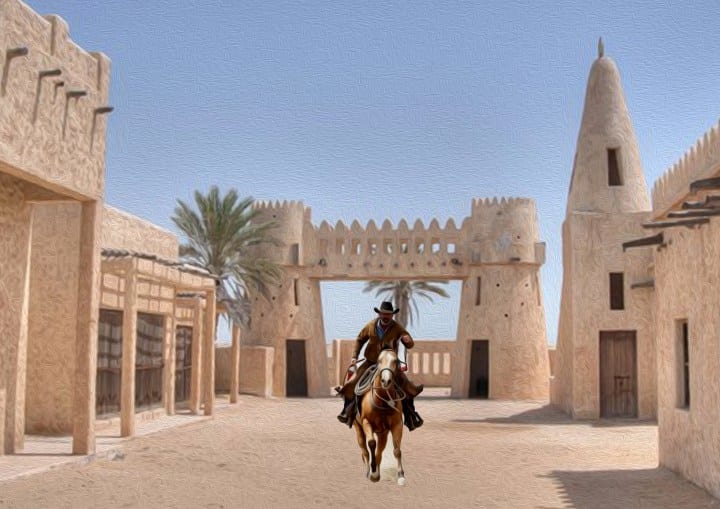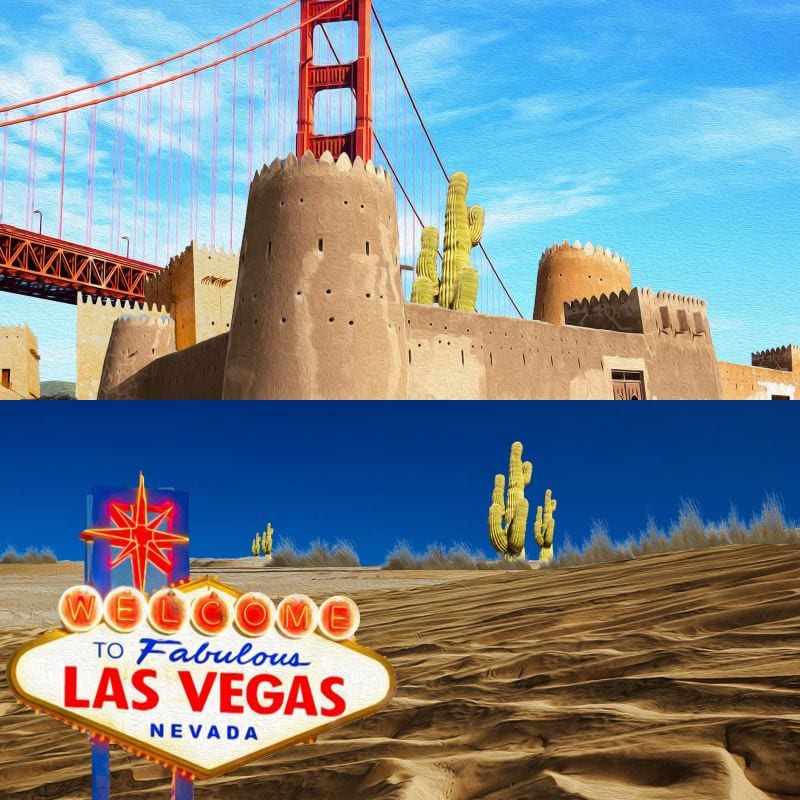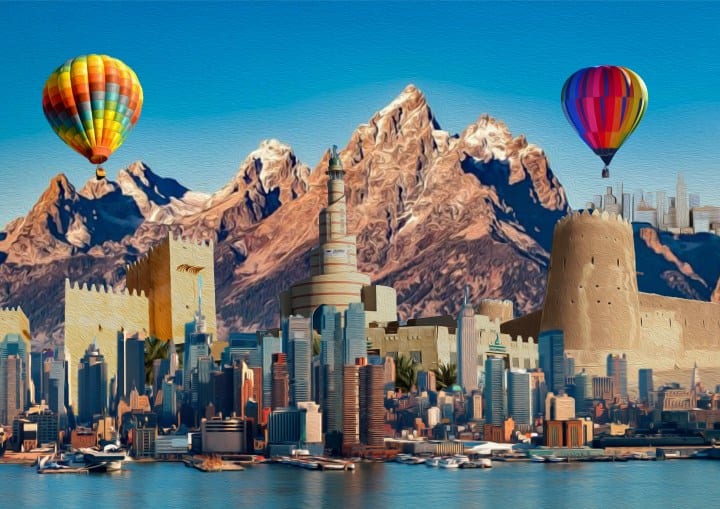Meet the Designer of the Qatar US Year of Culture Logo
Sara Ahmed AlHelal comes from an artistic family, which would explain her inclination for creative work. But it was hard work, dedication, and pure talent that got her design nominated as the Qatar-USA 2021 Year of Culture logo for Qatar Museums.
Sara Ahmed AlHelal, is a third-year student at VCUarts Qatar, where she is pursuing a Bachelor of Fine Arts Degree (BFA) in Graphic Design. Her father, Ahmed AlHelal who is her role model, was a cartoonist/caricaturist at a local magazine while her mother was a photographer. She also has a large number of her immediate family dabbling in the field of art and design. She says, “I’ve been surrounded by talented, creative people. I believe this has developed my skills and made me who I am today.”
Talking about the logo that will now represent all of the Qatar US Year of Culture activities for a year, Sara says that she has mixed cultural representations of the two countries to bring a unified design: “I refined my concept into a simplified graphic combining Al Wahda Arches with the Statue of Liberty, the final iteration of the Qatar-USA identity,” she says.
A risk-taker and design-lover, Sara loves exploring and learning new things. “If I am passionate about something, I put my entire energy on learning more about it. I am interested in typography, lettering, and visual identity and I enjoy many other aspects of design.”
“My philosophy is a mix of clean and minimal, with the intent to create something new. Design to me is an iterative and user-driven process, which always provides the best results when it is a collaborative process. The process, starting from the user to the finished prototype/ outcome is a story, where all the characters play a part to let the story unfold seamlessly.”
SCALE learns more about Sara and her love for design and her inspiration in creating the logo that will now represent all the activities of the US Qatar 2021 Year of Culture.
SCALE: How has your presence in Qatar, nurtured your love for design?
SARA: Qatar, despite being a small country, is rich in heritage and culture. From old souqs to pearl diving, poetry, dhows, sadu weaving, goldsmithing, falconry, camel racing, horse racing, calligraphy, and etching, there is so much around us to be inspired from. From our culture and tradition, language, religion, architecture, poetry, nature, and the desert.
Qatar’s past involved many geometric designs, we see this through its Islamic architecture, in mosques and old souqs. Growing up I was surrounded by this wonderful community. My parents also played a huge role in nurturing my creativity from a really young age. My parents believed in the idea that every child is born with a natural curiosity to learn, and an intrinsic motivation to master new skills.
Therefore, growing up I had many different experiences some were good, and some were bad, but I believe that in exploring all these interests and hobbies I was able to build my confidence, create friendships, become more active and healthier. I also believe that it developed my teamwork skills and helped me set goals and accomplish tasks. It gave me the opportunity to get out of my comfort zone and identify myself.
SCALE: How did you approach this particular logo assignment?
SARA: This project began as part of my Core Studio Class, a project that focused on the relationship between Qatar and United States. Students had to come up with conceptual branding ideas that investigated the similarities and differences between the two countries. My work began with a concept that investigated ‘beautifully bad’ postcards. During the research phase, I collected retro American postcards from online archives and compared them to similar postcards from this region. Using the visual languages of these postcards, I developed several ideas using photo-collage and typography to create a mashup of Qatar and American cultures. These initial designs were recognised by the Year of Culture team which led to an internship with Qatar Museums where I continued developing my ideas. This led to the making of the logo. Keeping with the playful approach, I refined my concept into a simplified graphic combining Al Wahda Arches with the Statue of Liberty, the final iteration of the Qatar-USA identity.
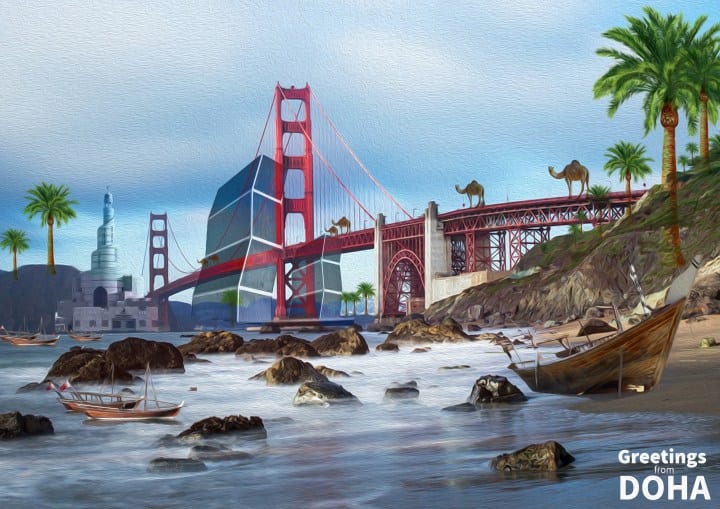
“I look for inspiration elsewhere: Architecture and interior design, the aesthetic style, modern minimalism to art deco and everything in between,” says Sara.
SCALE: What do you think is lacking in the design field in Qatar? What change have you seen in the industry over the last decade?
SARA: With one of the fastest-growing economies worldwide, Qatar is rapidly growing, largely because we would be hosting the 2022 FIFA World Cup. Over the last few years, we have seen many changes in the country. In terms of the art world, Qatar has been supporting and promoting local artists as well as providing a platform for regional and international artists to showcase their multi-faceted talents. A few years back this was not the case, and the art community wasn’t as recognized or given the attention, compared to today.
This change has inspired many to become more involved in the community. Another change that I’ve noticed, is that Qatar has become the world’s newest hub of art and culture. Qatar has been buying art at a level we’ve never seen before, for example, one of The Card Players, a series of Impressionist paintings by the French modernist Paul Cezanne was bought by Qatar in 2012 for $250 million and that sale is supposedly the highest price paid ever for a work of art. Another famous work of art by modernist Mark Rothko, White Center, is also said to have been purchased by the Al-Thani family for $72.8 million. The wonderful series of fourteen monumental bronze sculptures by Damien Hirst chronicles the gestation of a fetus inside a uterus, from conception to birth. “The Challenge 2015” which is a piece created by Iraqi artist Ahmad Al-Bahrani to mark the 24th Men’s Handball Championship in Doha, are all works of immense value that grace the country now. Not only is the country interested in buying art pieces, but also in hosting exhibitions, film festivals, musical shows, art shows, creating social areas for people to connect and share their thoughts, ideas and experiences.
SCALE: How has design influenced your thought process and how has lockdown refined it?
SARA: Design has a profound impact on our daily lives, whether we realize it or not. Design surrounds us, everywhere we look, the phone in your hand, the chair you are sitting on, the website you are browsing. All of these items have been carefully and thoughtfully executed by designers. I believe that design helps us engage with one another, it keeps us connected to the world and helps us navigate our way through physical and digital spaces. I personally look for inspiration everywhere I go. Inspiration can simply come from music, food, poetry, objects, childhood memories, and emotions. Design need not be planned step by step, it can be a spur of a moment kind of thing.
Despite all the negativity that came with Covid-19 and the lockdown, there are many benefits that came with it. The lockdown gave us the opportunity to reconnect with family, spend quality time with our parents and siblings, and focus on our mental and physical health. Through lockdown, I was able to meditate, take a mental break from all my worries and stresses. I got the chance to work on some projects that I left on pause for two years. I would definitely say that the lockdown has taught me many new things and helped me appreciate the little things in life even more.
SCALE: What inspires you as an artist?
SARA: There are so many things out there in the world to be inspired from, I try my best to not look at existing works of art, as there is a fine line between “inspired” and “copied”.
To avoid this, I look for inspiration elsewhere. Fashion, trends, especially trends that change on a seasonal basis. Colour schemes, the lines of a garment, fabric, textures, and patterns are things we can emulate in our designs. Magazines, such as Bazaar, Vogue, Glamour, and Nylon are also a great source of inspiration. As well as architecture and interior design, the aesthetic style of modern minimalism to art deco and everything in between. The beautiful Art Nouveau movement, that is defined by violent curves, dynamic, undulating, flowing lines. Photography is another great inspiration, the story behind the image helps with coming up with a narrative.
As a graphic designer, I look at packaging designs especially ones from Japan, which are extremely unique in style. Packaging surrounds us, which makes it easy to find examples in the real world that you could apply to your projects. Other areas of inspiration are board games, nature, travelling, music, crafts, illustrated picture books that are filled with wonderful graphics, amazing typography, and the page layout, all of which are just as valuable.
SCALE: Who are your role models?
SARA: My biggest role model is my father Ahmed AlHelal, who has been supporting me and guiding me since the beginning. The relationship I share with my father is too valuable to be put into words. He’s someone that I look up to, and someone who I want to be like every single day. He encourages me to believe in myself and my capabilities, lends me strength when I need it, and constantly teaches me to do my part and have faith that everything would fall into place. He constantly pushes me to strive for the best and to challenge my own limits. I remember in my younger days, we would have art sessions in his office where we’d talk about art and design. My dad is the best teacher I have ever had, inside and outside of art school. To this day, I could not have asked for a better role model than my father.


